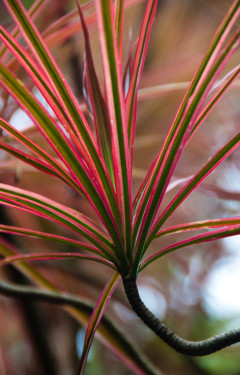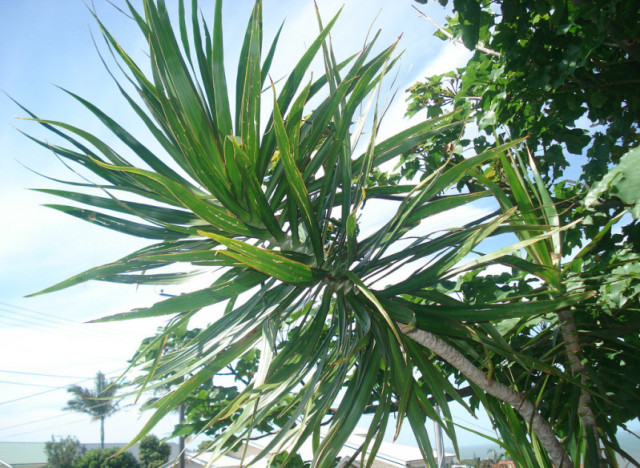With 2012 being the Year of the Dragon (and in light of Chinese New Year) it is only appropriate to select the Dragon Tree as the plant of the week. The Dragon Tree is the common name for Dracaena which is derived from a form of an Ancient Greek word 'drakaina' meaning female dragon. Many of the genus' species of dragon tree commonly grow in arid semi-desert climates with thick and visually heavy trunks and stiff leaves, but there are also many Dracaena species that have more of a shrubby appearance. The dragon tree that we normally see as an indoor houseplant is the Dracaena Marginata or Madagascar dragon tree. Long, narrow, and spiky green foliage with colorful margins radiate from the top of stalks like fireworks, this plant can be a scene stealer and powerful -- much like the Chinese Zodiac sign.

Flickr Photo by Bryan_Chan
The Madagascar dragon tree is not hard to find as a houseplant but it is sometimes overlooked. They prefer a bright filtered light and are even able to tolerate a moderately low filtered light. If your Dragon Tree is not receiving enough light you will begin to see its colorful red or pink margins fade to green. Let the soil of the Dragon Tree go slightly dry in between watering and do not let its roots sit in water. They benefit from some extra humidity so treat them to a misting every once and a while, especially in winter when most of our homes can get quite dry. As the plant grows, it sprouts new leaves from the top and in return the older foliage will shed from the bottom. You will find yourself pulling those older leaves before they naturally fall because of their unsightly nature -- you are not doing anything wrong, this is part of its natural growth habit. As it sheds leaves from the base it will create that interesting scaly texture on the trunk. Keep your Dragon Tree away from pets as they are slightly toxic (though not to humans). The ASPCA is a great resource for more information on the toxicity of this plant.

Flickr Photo by marragem
You can find many growth variations of this plant in regards to its stalk such as multi-trunk, single trunk and stump. At a young age the stalks can be quite malleable and easily trained in to different forms such as braided. Many Dragon Tree varieties are cultivated for the beauty of their stalks such as D. Sanderiana, commonly known as 'Lucky Bamboo' is not in fact a bamboo at all but a cutting of a Dragon Tree variety. Dragon Trees can become quite large and at an older age are great to plant in a room to obtain visual height with its 'fireworks' exploding at eye level and above. The Dragon Tree might not bring you personal success and fortune, but it does make a strong and dependable houseplant that you can enjoy for years to come.